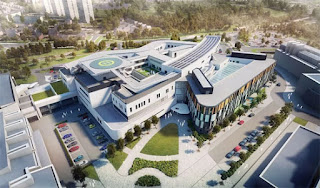BIM is shading off the conventional drawing rapidly. Building
Information Modeling (BIM) introduces a new way for designing, constructing and
operating buildings and infrastructure. The application stretches far beyond
the known territory and it also touches the history with its best features and
applications. For understanding the building designs and materials of
historical sites, BIM brings out an unparalleled approach. Renovating buildings
centuries old requires a comprehensive knowledge of structural designs.
The most known problem associated with renovating historical sites
is identifying the structural design. BIM comes as a boon for the organizations
that are conducting such works. They revealed that scanning the old
construction is like lifting the pages of history and bring out the
architectural theories decades ago. BIM has been used for surveying sites
accurately that carve out the foundation step of planning the renovation work
as per the structure needs.
Mapping historical sites let you understand how the materials have
been used and transformed over times. BIM has been used in renovating the
Attucks school in Kansas City. The red building was built in 1905 by Charles A.
Smith. The building stands in the test of time as a historical site of the
colonial revival influences and it has a great influence in the education
history of the African-American community.
Nearly two decades after, Charles A. Smith was approached to
extend the historical building with a two-story wing to eliminate the over-crowding
issue. The task was challenging since Smith needed to match the aesthetic
essence of the building while designing the extending part. He used original
architectural detail to recreate the same value created decades back. Getting
the complete details of the building was not easy and it needed a thorough
survey.
Redeveloping Attucks in a new way was a complex task for the team
and it required to unveil the existing structural design in the infrastructure.
BHC RHODES, a civil engineering firm, shouldered the responsibility of offering
3D Revit Building Information Model. The company used the lider 3D mobile
mapping of GeoSLAM conduct the survey work magnificently.
The survey brought out some
necessary factors that were essential for carrying out the renovation work
safely. The team revealed information about the deteriorating conditions of the
wooden flooring, a possibility of ceiling collapses and poor air quality.
The
revealed information helped the workers on site plan their job in a secure way.
The firm took help from GeoSLAM ZEB-REVO for mapping the inside of the
building. The lightweight, a mobile device used the 3D Simultaneous
Localization and Mapping (SLAM) technology to perform the required job
efficiently. The process is considered to be comparatively cost effective one
to terrestrial, static or trolley based systems.
ZEB-REVO is incredibly designed
for mobile mapping and surveying for multi-storied buildings. The device allows
you to scan the inside of a construction just while walking around. For the
Attucks School, the data received by this device generated 200BIM models.
The
application of BIM in layering the historical sites proves to be a new
approach. It opens up an array of benefits that lead to a flawless working
ability. Sometimes the owner of building needs details about how the renovation
work will be done and which material will be the best for work. BIM presents a
design that contains every detail required for getting a quick approval on the
proposed plan.
For
other information follow geospatial-solutions.com
~~~~~~~~~~~~~~~~~~~~~~~~
Published By
Rajib Dey
www.bimoutsourcing.com
~~~~~~~~~~~~~~~~~~~~~~~~



